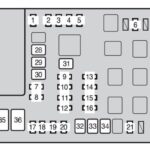In the realm of modern vehicle maintenance and diagnostics, OBD2, which stands for On-Board Diagnostics version 2, is a critical system. It’s essentially a computer system integrated into almost every car on the road today, acting as the vehicle’s health monitor. The core function of OBD2 is to track and report on a vehicle’s emissions and various engine and system parameters. This capability offers significant advantages for car owners and automotive technicians alike, primarily through the use of Automotive Software Obd2.
OBD2 systems are designed to catch potential problems early, often before they escalate into serious and costly repairs. When the system detects an issue, it logs diagnostic trouble codes and can provide valuable insight into the nature of the fault. This includes capturing a snapshot of the vehicle’s operating conditions at the moment the problem occurred. Furthermore, OBD2 provides access to real-time data from the vehicle’s sensors. This live data stream allows users to monitor parameters like speed, engine RPM, and torque, and to calculate important metrics such as fuel efficiency and engine load.
The gateway to this diagnostic information is the standardized 16-pin OBD2 diagnostic connector. Typically found on the driver’s side of the vehicle, beneath the steering wheel, this port is where diagnostic tools connect to access the vehicle’s OBD2 system. To interact with this system, specialized tools known as scan tools are necessary. These tools, running automotive software OBD2, interpret the data from the vehicle’s computer. Scan tools come in two main configurations: stand-alone devices and PC/Mobile-based systems. Stand-alone scan tools are self-contained handheld units. While convenient, they often have limited capabilities, lack advanced features, and may not be easily updated. On the other hand, PC/Mobile-based scan tools leverage the power of computers and mobile devices. By using dedicated automotive software OBD2, along with an interface that connects to a laptop, smartphone, or tablet via USB, Bluetooth, or Wi-Fi, these systems offer greater flexibility, advanced diagnostic functionalities, and upgradeability. This makes automotive software OBD2 on PC or mobile platforms a powerful tool for comprehensive vehicle diagnostics and monitoring.
